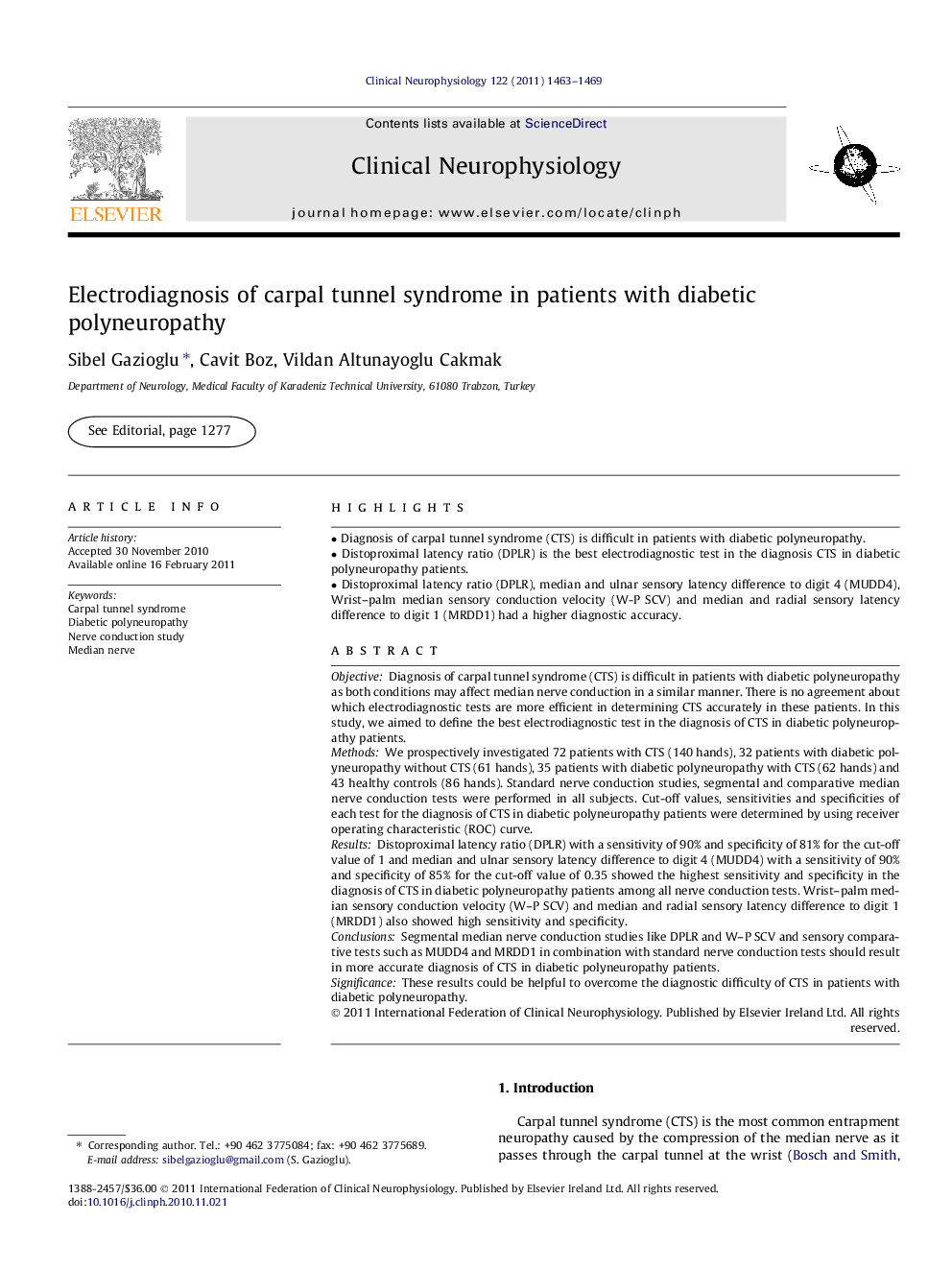| Article ID | Journal | Published Year | Pages | File Type |
|---|---|---|---|---|
| 3044793 | Clinical Neurophysiology | 2011 | 7 Pages |
ObjectiveDiagnosis of carpal tunnel syndrome (CTS) is difficult in patients with diabetic polyneuropathy as both conditions may affect median nerve conduction in a similar manner. There is no agreement about which electrodiagnostic tests are more efficient in determining CTS accurately in these patients. In this study, we aimed to define the best electrodiagnostic test in the diagnosis of CTS in diabetic polyneuropathy patients.MethodsWe prospectively investigated 72 patients with CTS (140 hands), 32 patients with diabetic polyneuropathy without CTS (61 hands), 35 patients with diabetic polyneuropathy with CTS (62 hands) and 43 healthy controls (86 hands). Standard nerve conduction studies, segmental and comparative median nerve conduction tests were performed in all subjects. Cut-off values, sensitivities and specificities of each test for the diagnosis of CTS in diabetic polyneuropathy patients were determined by using receiver operating characteristic (ROC) curve.ResultsDistoproximal latency ratio (DPLR) with a sensitivity of 90% and specificity of 81% for the cut-off value of 1 and median and ulnar sensory latency difference to digit 4 (MUDD4) with a sensitivity of 90% and specificity of 85% for the cut-off value of 0.35 showed the highest sensitivity and specificity in the diagnosis of CTS in diabetic polyneuropathy patients among all nerve conduction tests. Wrist–palm median sensory conduction velocity (W–P SCV) and median and radial sensory latency difference to digit 1 (MRDD1) also showed high sensitivity and specificity.ConclusionsSegmental median nerve conduction studies like DPLR and W–P SCV and sensory comparative tests such as MUDD4 and MRDD1 in combination with standard nerve conduction tests should result in more accurate diagnosis of CTS in diabetic polyneuropathy patients.SignificanceThese results could be helpful to overcome the diagnostic difficulty of CTS in patients with diabetic polyneuropathy.
► Diagnosis of carpal tunnel syndrome (CTS) is difficult in patients with diabetic polyneuropathy. ► Distoproximal latency ratio (DPLR) is the best electrodiagnostic test in the diagnosis CTS in diabetic polyneuropathy patients. ► Distoproximal latency ratio (DPLR), median and ulnar sensory latency difference to digit 4 (MUDD4), Wrist–palm median sensory conduction velocity (W-P SCV) and median and radial sensory latency difference to digit 1 (MRDD1) had a higher diagnostic accuracy.
